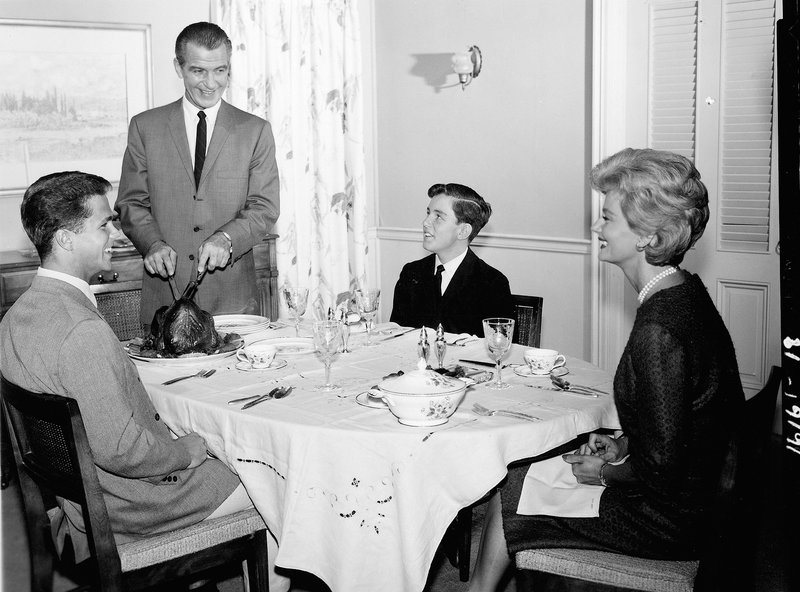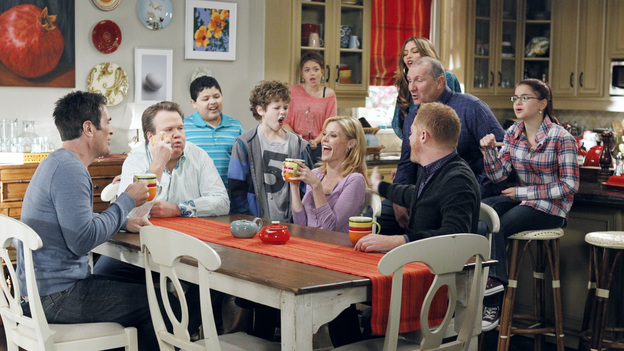Family Meals Then and Now
We continue with our summer blog series “Perspectives from Anthropology of Food” with this post from Adrian Bresler. This series presents work written by the students in the summer Anthropology of Food class (ML 641) in which they reflect on current issues, discuss assignments they have worked on, or address topics of particular interest to them.
In our “Anthropology of Food” class our evening discussion centered on family meals, on the definition of what constitutes a traditional family, and finally on how the overall perception of the family and the meals they eat has changed over time. We also focused on how these factors have been portrayed by the media in the United States over the past 40 to 50 years. The supporting presentation used in class juxtaposed a photo of the characters of TV’s Leave it to Beaver family against those of Modern Family. For those who are unfamiliar, in the former TV show, the Cleaver family of the 1950s comprised a working father, a stay-at-home mother and two school-age sons, all of whom sat down at the table together every night to eat a home-cooked meal and discuss daily events and family decisions. On the other hand, Modern Family, a currently running TV show, depicts three related families that live in the same vicinity: (i) a working couple with three children, (ii) a gay couple with an adopted child, and (iii) a non-traditional family consisting of an older, divorced man, a younger woman who is now married to him, both of them living with her son from her prior marriage, and the son that the couple has together.

What is interesting is that despite the differences triggered by 50 years of cultural upheaval, these three families still sit down to eat together for celebrations. By doing so, they bring together those characters who bicker, those whose lifestyles are unconventional, and those who would not be connected to the rest in any way except for the fact that they are indeed ‘family’. While the kinds of discussions they have are different from the ones that take place in the Cleaver household—some triggered by their differences, others by the changes in society over the last 50 years—there are a lot of commonalities. Some things never change.

We went on to talk about the gradual shift in the way some people consider who else is to be included in their own families—those who are biologically related to them and those who are not, and the ones they share meals with and those with whom they do not. In our readings we learned about societies that view the family unit as “elastic” or “expandable” (Bloch 1999) in that close connections between people are formed and then strengthened by sharing food. Therefore, if you invite old friends to your house for dinner on Thanksgiving Day and treat them as if they are part of an extended family, on a day traditionally reserved for blood relatives, does biology really matter as long as the sharing continues? Can your definition of family expand for that day?
We also discussed the changing roles of various members of the family over the past 50 years. Since more women now work outside the home in demanding jobs, meals or portions of meals eaten at home may no longer be home-cooked but may be outsourced from local restaurants or supermarkets that offer prepared foods. In other families, gender roles have reversed and the other person prepares the meals. Perhaps family meals are eaten in restaurants more often. For yet others, no meal is eaten in favor of snacking or grazing during the day. The combinations are as endless as are the ways a family can be defined.
The way families share meals may have changed over the past 50 years and the sharing may be less frequent, but sitting down together to eat a meal still communicates the same messages of solidarity, shared values, and acceptance. Yes, families, however defined, can still argue about politics, money, religion, or baseball teams but the connection between people is reinforced by sharing food. The discussions in class has made me think about the way my own family has shared meals over the years; the memories of those people linger long after the meal is finished.
Works Cited:
Bloch, Maurice. 1999. Commensality and Poisoning. Social Research 66(1):133-149.